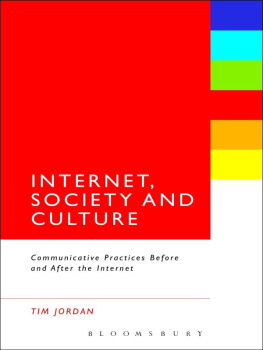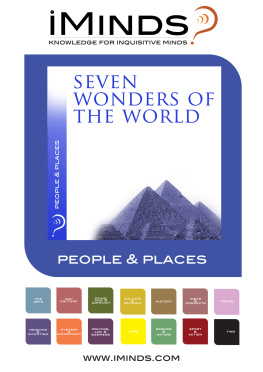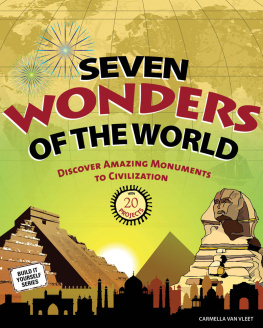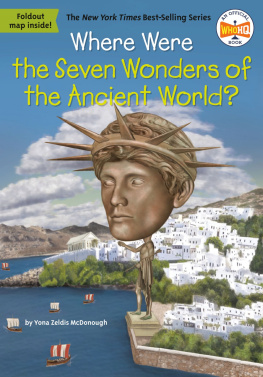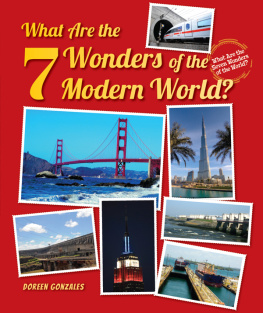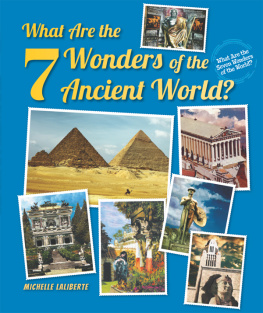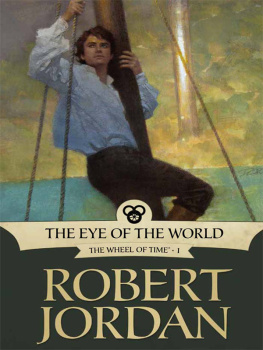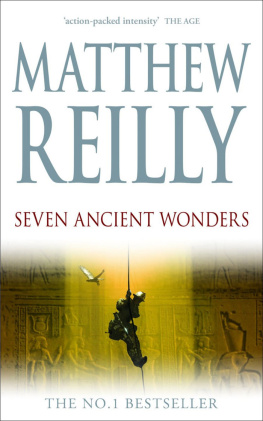Jordan - The seven wonders of the ancient world
Here you can read online Jordan - The seven wonders of the ancient world full text of the book (entire story) in english for free. Download pdf and epub, get meaning, cover and reviews about this ebook. City: Oxfordshire;England;New York, year: 2014, publisher: Taylor & Francis (CAM);Routledge, genre: Religion. Description of the work, (preface) as well as reviews are available. Best literature library LitArk.com created for fans of good reading and offers a wide selection of genres:
Romance novel
Science fiction
Adventure
Detective
Science
History
Home and family
Prose
Art
Politics
Computer
Non-fiction
Religion
Business
Children
Humor
Choose a favorite category and find really read worthwhile books. Enjoy immersion in the world of imagination, feel the emotions of the characters or learn something new for yourself, make an fascinating discovery.
The seven wonders of the ancient world: summary, description and annotation
We offer to read an annotation, description, summary or preface (depends on what the author of the book "The seven wonders of the ancient world" wrote himself). If you haven't found the necessary information about the book — write in the comments, we will try to find it.
Jordan: author's other books
Who wrote The seven wonders of the ancient world? Find out the surname, the name of the author of the book and a list of all author's works by series.
The seven wonders of the ancient world — read online for free the complete book (whole text) full work
Below is the text of the book, divided by pages. System saving the place of the last page read, allows you to conveniently read the book "The seven wonders of the ancient world" online for free, without having to search again every time where you left off. Put a bookmark, and you can go to the page where you finished reading at any time.
Font size:
Interval:
Bookmark:

the
SEVEN
WONDERS
of the
ANCIENT
WORLD
First published 2002 by Pearson Education Limited
Published 2014 by Routledge
2 Park Square, Milton Park, Abingdon, Oxon OX14 4RN
711 Third Avenue, New York, NY 10017, USA
Routledge is an imprint of the Taylor & Francis Group, an informa business
Copyright 2002, Taylor & Francis.
The right of Paul Jordan to be identified as Author of this Work has been asserted by him in accordance with the Copyright, Designs and Patents Act 1988.
All rights reserved. No part of this book may be reprinted or reproduced or utilised in any form or by any electronic, mechanical, or other means, now known or hereafter invented, including photocopying and recording, or in any information storage or retrieval system, without permission in writing from the publishers.
Notices
Knowledge and best practice in this field are constantly changing. As new research and experience broaden our understanding, changes in research methods, professional practices, or medical treatment may become necessary.
Practitioners and researchers must always rely on their own experience and knowledge in evaluating and using any information, methods, compounds, or experiments described herein. In using such information or methods they should be mindful of their own safety and the safety of others, including parties for whom they have a professional responsibility.
To the fullest extent of the law, neither the Publisher nor the authors, contributors, or editors, assume any liability for any injury and/or damage to persons or property as a matter of products liability, negligence or otherwise, or from any use or operation of any methods, products, instructions, or ideas contained in the material herein.
ISBN 13: 978-0-582-77187-1 (pbk)
British Library Cataloguing in Publication Data
A CIP catalogue record for this book can be obtained from the British Library
Library of Congress Cataloging in Publication Data
A CIP catalog record for this book can be obtained from the Library of Congress
Typeset by Fakenham Photosetting Limited, Fakenham, Norfolk
For Marie
The author and publisher would like to thank Julian Smith, classics mentor, for his many helpful contributions and Mac Dowdy, architectural historian, for his careful yet striking reconstructions of the Seven Wonders.
The watercolour paintings appearing in colour throughout originally appeared in J. A. Hammerton, Wonders of the Past, 1924.

The locations of the Seven Wonders of the Ancient World
T HE very notion of The Seven Wonders of the Ancient World raises questions for both of its nouns and both of their adjectives. Why seven? What was so wonderful about these particular wonders? What do we mean by the Ancient World ancient for whom and what sort of world?
Interestingly, the notion did not start with Wonders but with Sights. The two words in Greek were quite similar and the one slipped into the other naturally enough: theamata turned into thaumata. These Seven Sights for the armchair travellers of the Hellenistic and Roman worlds to sight-see as they read about them had to be, in the nature of things, wonderful enough to arouse awe in the first place. On the whole, it was scale of engineering and/or luxury of concept and appointment that prompted the choice. The Pyramids of Egypt had both unparalleled scale and a seemingly over-luxuriant expenditure of effort to construct them. The Hanging Gardens of Babylon were self-evidently a luxurious indulgence achieved by triumphs of engineering (which were equally apparent in the great walls of that city). The gigantic Statue of Zeus at Olympia was decked in the most elaborate adornment and sculpted by the most ingenious means. The Temple of Artemis at Ephesus combined scale with vivacity of decoration and pioneering architectural devices. The Mausoleum at Halicarnassus was the biggest tomb in the Graeco-Roman world (after the Pyramids) and exhibited an ostentatious compendium of international styles put together with massive engineering effort. The Colossus of Rhodes, even in the wrecked state into which it fell within half a century of its completion, continued to proclaim the majesty of its conception and ambition of its construction as a ruin. The Pharos lighthouse of Alexandria was before all else an essay in innovatory engineering on a grand scale.

The temple at Ephesus
Greatness of size, luxury of appointment and boldness of concept and execution, combining to make a vivid imaginative impact on those who saw them and those who read about them: these were the qualities that first got these sights-cum-wonders listed, in a certain cultural context that we call the Hellenistic world. The same qualities went on recommending them to the Roman world that succeeded and absorbed the Hellenistic one. (With the end of the Roman empire, there came also the end of the entire epoch that we know as the Ancient World, reaching back beyond Hellenism through classical Greek and biblical times to the older civilisations of Egypt and Mesopotamia whose first rise marked the beginnings of ancient history for the Western world.)
Hellenism was the international culture that Alexanders conquests of the late fourth century BCE engendered in Greece, in the (mostly eastern) Mediterranean world of Greek colonies and in the Greek-ruled reaches of Egypt and Asia Minor (and some way beyond). Hellenism spoke Greek and read Greek and was heir to the religious, artistic and intellectual traditions of the classical Greeks; but it encompassed, too, the rougher ways of the Macedonian Greeks from whom Alexander the Great himself had sprung and the frankly oriental habits of the peoples brought into the fold in the east. (Alexander, for one, liked to dress up as a Persian and to put on the semi-divine pretensions of the eastern monarchies.) Hellenism survived the political break-up of Alexanders empire at the hands of his succeeding generals and thrived in the cities they maintained, to greatly influence the Roman empire in due course.
Of course, Hellenism did not come into being overnight with Alexander of Macedon. Many of the seeds of its flowering were germinating in late classical Greece. With its trading depots in Egypt and its important commercial cities along the coast of Anatolia, Greece had long been on the receiving end of exotic influences; in some of its richer colonies, in the western Mediterranean too, Greek culture had already taken a turn for the luxurious and even megalomaniac before the coming of the Macedonians in the late fourth century BCE. (BCE = Before the Common Era; CE = the Common Era of our present dating system.)
The philosopher Plato who died in 347 BCE, a decade after Alexander was born, could evidently see the Hellenistic way of life coming in his own day. His moral tale of Atlantis, one of the last things he wrote, was designed to contrast the old, sober virtues of the Greeks (as he saw them) with a changing worlds new and luxurious vices, which he projected backwards in time onto his Atlanteans. These Atlanteans finally took grandeur, including self-aggrandisement, luxurious excess and high-handed ambition so far that, for all their power, they were defeated thousands of years ago in Platos fiction by the virtuous Athenians of yore, and then drowned by the gods. Plato might have welcomed the Macedonians at first as a stern, firm hand on the degenerating Greeks around him: he would have been appalled to find Alexander going on to usher in a semi-oriental empire of greedy commerce, ostentation, showy mixed-up religions and everybody on the make. It is to be very much doubted whether he would have been at all impressed with the Seven Wonders of the World that Hellenistic culture was to make so much of.
Font size:
Interval:
Bookmark:
Similar books «The seven wonders of the ancient world»
Look at similar books to The seven wonders of the ancient world. We have selected literature similar in name and meaning in the hope of providing readers with more options to find new, interesting, not yet read works.
Discussion, reviews of the book The seven wonders of the ancient world and just readers' own opinions. Leave your comments, write what you think about the work, its meaning or the main characters. Specify what exactly you liked and what you didn't like, and why you think so.






